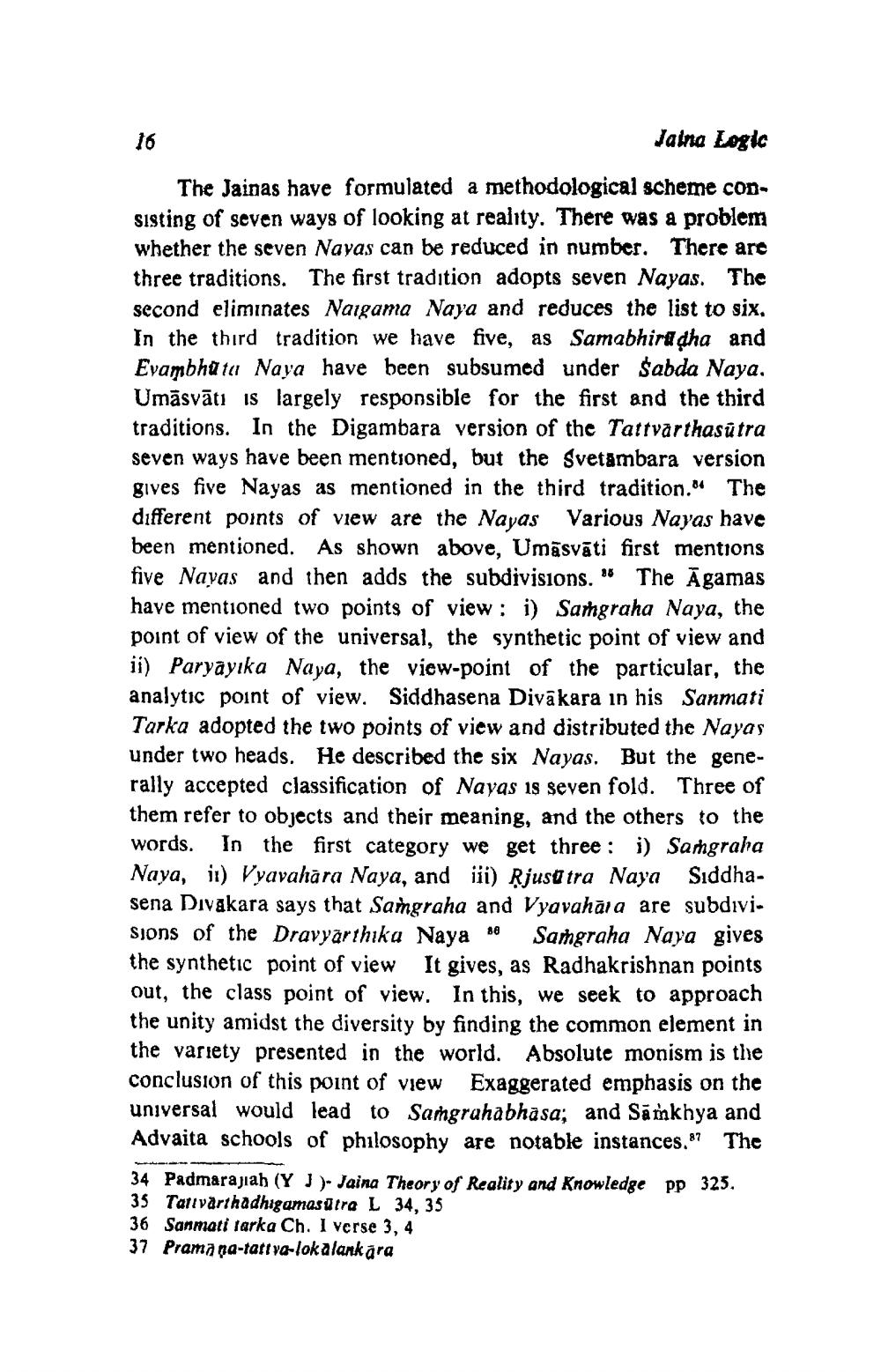________________
Jaina Logic The Jainas have formulated a methodological scheme consisting of seven ways of looking at reality. There was a problem whether the seven Nayas can be reduced in number. There are three traditions. The first tradition adopts seven Nayas. The second eliminates Naigama Naya and reduces the list to six. In the third tradition we have five, as Samabhiri dha and Evambhuta Naya have been subsumed under $abda Naya, Umāsvāti is largely responsible for the first and the third traditions. In the Digambara version of the Tattvarthasutra seven ways have been mentioned, but the Svetambara version gives five Nayas as mentioned in the third tradition. The different points of view are the Nayas Various Nayas have been mentioned. As shown above, Umāsvāti first mentions five Nayas and then adds the subdivisions." The Āgamas have mentioned two points of view : i) Samgraha Naya, the point of view of the universal, the synthetic point of view and ii) Paryayıka Naya, the view-point of the particular, the analytic point of view. Siddhasena Divā kara in his Sanmati Tarka adopted the two points of view and distributed the Nayas under two heads. He described the six Nayas. But the generally accepted classification of Nayas is seven fold. Three of them refer to objects and their meaning, and the others to the words. In the first category we get three : i) Sangraha Naya, ii) Vyavahāra Naya, and iii) Rjusi tra Naya Siddhasena Divakara says that Sangraha and Vyavahāla are subdivisions of the Dravyarthika Naya 80 Samgraha Naya gives the synthetic point of view It gives, as Radhakrishnan points out, the class point of view. In this, we seek to approach the unity amidst the diversity by finding the common element in the variety presented in the world. Absolute monism is the conclusion of this point of view Exaggerated emphasis on the universal would lead to Sangrahabhasa; and Sākhya and Advaita schools of philosophy are notable instances. The
34 Padmarajiah (Y J - Jaina Theory of Reality and Knowledge pp 323. 35 Tattvärthadhigamasutra L 34, 35 36 Sanmati tarka Ch. I verse 3, 4 37 Prama na-tattva-lokalankara




